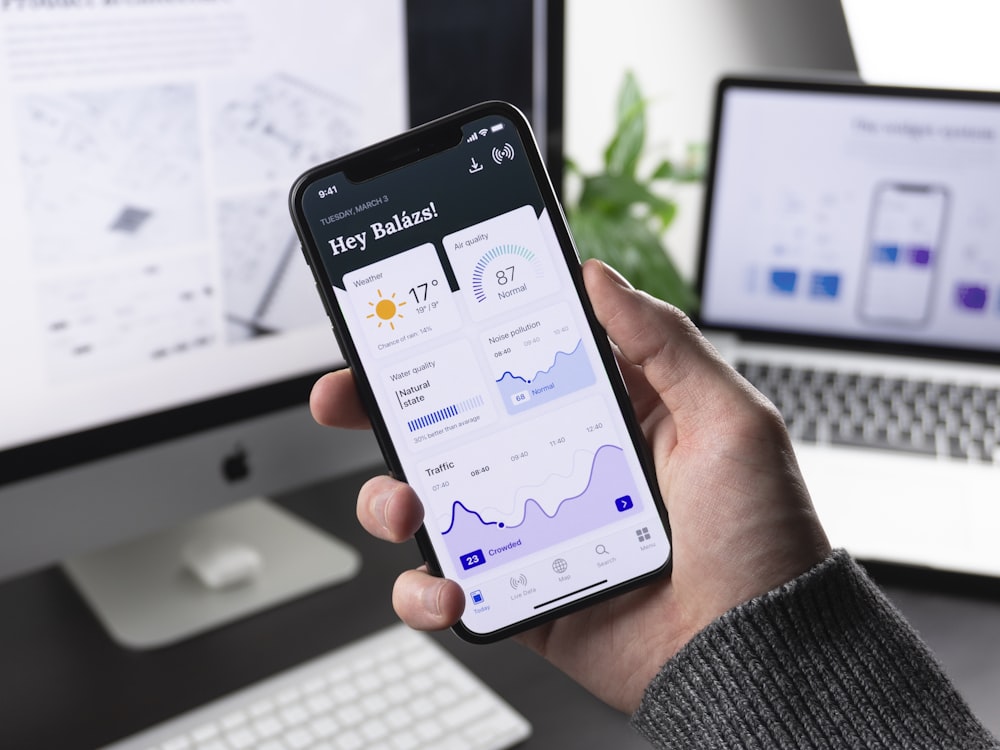Flutter development has revolutionized mobile app creation, and the right packages can significantly accelerate your development process. Whether you’re building your first Flutter app or you’re a seasoned developer, having the right tools in your toolkit is essential. In this comprehensive guide, we’ll explore the top 10 most useful Flutter packages that every developer should know in 2025.

Why Flutter Packages Matter for Modern Development
Flutter packages are pre-built code libraries that solve common development challenges, saving you time and ensuring best practices. The Flutter ecosystem has grown exponentially, with over 35,000 packages available on pub.dev. These packages range from UI components to state management solutions, each designed to make your development journey smoother and more efficient.

1. Provider – State Management Made Simple
Package: provider: ^6.1.1
Provider is the officially recommended state management solution for Flutter applications. It’s built on top of InheritedWidget and offers a simple, scalable approach to managing application state.
Key Features:
- Easy to learn and implement
- Excellent performance with minimal rebuilds
- Great for small to medium-sized applications
- Officially supported by the Flutter team
// Example usage
class Counter with ChangeNotifier {
int _count = 0;
int get count => _count;
void increment() {
_count++;
notifyListeners();
}
}2. HTTP – Network Requests Simplified

Package: http: ^1.2.0
The HTTP package is essential for making API calls and handling network requests in Flutter applications. It provides a simple, composable API for HTTP operations.
Key Features:
- Support for GET, POST, PUT, DELETE operations
- Request and response interceptors
- Timeout and retry mechanisms
- JSON serialization support
// Example API call
Future<List<User>> fetchUsers() async {
final response = await http.get(
Uri.parse('https://api.example.com/users'),
);
if (response.statusCode == 200) {
return (jsonDecode(response.body) as List)
.map((json) => User.fromJson(json))
.toList();
}
throw Exception('Failed to load users');
}3. Shared Preferences – Local Data Storage
Package: shared_preferences: ^2.2.2
Shared Preferences provides a persistent storage solution for simple data types, making it perfect for storing user preferences, settings, and small amounts of data that need to persist between app sessions.
Key Features:
- Store strings, integers, booleans, and doubles
- Platform-specific implementation (NSUserDefaults on iOS, SharedPreferences on Android)
- Asynchronous operations
- Simple key-value storage
// Saving data
SharedPreferences prefs = await SharedPreferences.getInstance();
await prefs.setString('username', 'john_doe');
await prefs.setBool('isFirstTime', false);
// Reading data
String? username = prefs.getString('username');
bool? isFirstTime = prefs.getBool('isFirstTime') ?? true;4. Flutter Launcher Icons – Professional App Icons

Package: flutter_launcher_icons: ^0.13.1
Creating app icons for different platforms and screen densities can be tedious. Flutter Launcher Icons automates this process, generating all required icon sizes from a single source image.
Key Features:
- Generates icons for iOS and Android
- Supports adaptive icons for Android
- Custom icon configurations
- Command-line tool integration
# pubspec.yaml configuration
flutter_icons:
android: "launcher_icon"
ios: true
image_path: "assets/icon/icon.png"
min_sdk_android: 215. Google Fonts – Beautiful Typography
Package: google_fonts: ^6.2.1
Typography plays a crucial role in app design, and Google Fonts provides access to hundreds of high-quality fonts that can elevate your app’s visual appeal.

Key Features:
- Access to 1400+ font families
- Automatic font downloading and caching
- Support for variable fonts
- Easy integration with Flutter’s text styling
// Using Google Fonts
Text(
'Welcome to Flutter Daily!',
style: GoogleFonts.roboto(
fontSize: 24,
fontWeight: FontWeight.bold,
color: Colors.blue,
),
)
// Set app-wide theme
MaterialApp(
theme: ThemeData(
textTheme: GoogleFonts.latoTextTheme(),
),
)6. Cached Network Image – Efficient Image Loading
Package: cached_network_image: ^3.3.1
Loading images from the internet efficiently is crucial for app performance. Cached Network Image provides advanced image loading capabilities with caching, placeholder support, and error handling.
Key Features:
- Automatic caching of downloaded images
- Placeholder and error widgets
- Progress indicators
- Memory and disk cache management
CachedNetworkImage(
imageUrl: "https://example.com/image.jpg",
placeholder: (context, url) => CircularProgressIndicator(),
errorWidget: (context, url, error) => Icon(Icons.error),
width: 200,
height: 200,
fit: BoxFit.cover,
)7. Flutter SVG – Scalable Vector Graphics
Package: flutter_svg: ^2.0.9
SVG images are perfect for icons and graphics that need to scale across different screen densities. Flutter SVG provides comprehensive support for rendering SVG files in Flutter applications.
Key Features:
- Render SVG files from assets or network
- Customizable colors and sizes
- Support for complex SVG features
- Excellent performance for vector graphics
// Display SVG from assets
SvgPicture.asset(
'assets/icons/logo.svg',
width: 100,
height: 100,
color: Colors.blue,
)
// Display SVG from network
SvgPicture.network(
'https://example.com/icon.svg',
semanticsLabel: 'App Logo',
)8. URL Launcher – External Link Handling
Package: url_launcher: ^6.2.4
URL Launcher enables your Flutter app to launch URLs in external applications, making it essential for opening websites, making phone calls, sending emails, and launching other apps.
Key Features:
- Launch web URLs in browser
- Make phone calls and send SMS
- Open email clients
- Launch other mobile apps
// Launch website
Future<void> _launchUrl(String url) async {
final Uri uri = Uri.parse(url);
if (!await launchUrl(uri)) {
throw Exception('Could not launch $url');
}
}
// Make phone call
Future<void> _makePhoneCall(String phoneNumber) async {
final Uri launchUri = Uri(
scheme: 'tel',
path: phoneNumber,
);
await launchUrl(launchUri);
}9. Path Provider – File System Access
Package: path_provider: ^2.1.2
Path Provider helps you find commonly used locations on the filesystem, enabling your app to store files, cache data, and manage local storage effectively.
Key Features:
- Access to app document directory
- Temporary and external storage paths
- Platform-specific directory handling
- Support for both Android and iOS
// Get app documents directory
Future<String> get _localPath async {
final directory = await getApplicationDocumentsDirectory();
return directory.path;
}
// Create and write to a file
Future<File> _writeToFile(String data) async {
final path = await _localPath;
final file = File('$path/data.txt');
return file.writeAsString(data);
}10. Flutter Bloc – Advanced State Management

Package: flutter_bloc: ^8.1.3
For complex applications requiring robust state management, Flutter Bloc implements the BLoC (Business Logic Component) pattern, providing predictable state management with excellent testing capabilities.
Key Features:
- Separation of business logic from UI
- Excellent testability
- Time-travel debugging
- Built-in devtools integration
// Bloc implementation
class CounterBloc extends Bloc<CounterEvent, CounterState> {
CounterBloc() : super(CounterInitial()) {
on<CounterIncrement>((event, emit) {
emit(CounterValue(state.value + 1));
});
}
}
// Usage in widget
BlocBuilder<CounterBloc, CounterState>(
builder: (context, state) {
return Text('Counter: ${state.value}');
},
)Best Practices for Using Flutter Packages

When integrating these packages into your Flutter projects, keep these best practices in mind:
- Check Package Health: Always verify package maintenance, popularity scores, and recent updates on pub.dev
- Read Documentation: Thoroughly review package documentation and examples before implementation
- Version Management: Use specific version numbers to ensure consistency across development environments
- Test Thoroughly: Test package integration across different devices and platforms
- Keep Updated: Regularly update packages to benefit from bug fixes and new features
Conclusion
These top 10 Flutter packages represent the essential tools every Flutter developer should have in their arsenal. From state management with Provider and Bloc to network requests with HTTP, and from beautiful typography with Google Fonts to efficient image loading with Cached Network Image, these packages will significantly enhance your development workflow.

Remember that the Flutter ecosystem is constantly evolving, with new packages and updates being released regularly. Stay connected with the Flutter community, follow the official Flutter blog, and keep exploring pub.dev to discover new tools that can further improve your development process.
Start incorporating these packages into your next Flutter project, and watch how they transform your development experience. Happy coding with Flutter!
FAQs
Q: How do I add these packages to my Flutter project?
Add the package dependencies to your pubspec.yaml file under the dependencies section, then run flutter pub get to install them.
Q: Are these packages suitable for production apps?
Yes, all the packages mentioned are production-ready and widely used in commercial Flutter applications. They have good maintenance records and strong community support.
Q: How often should I update Flutter packages?
Review and update packages monthly or quarterly, depending on your project needs. Always test updates in a development environment before deploying to production.


